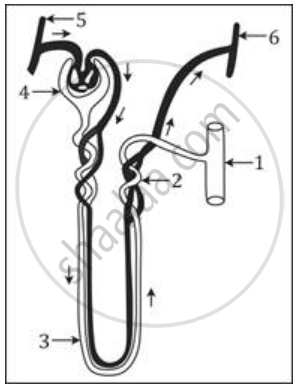Advertisements
Advertisements
Question
Malpighian tubules remove excretory products from ______.
Options
mouth
oesophagus
haemolymph
alimentary canal.
Solution
Malpighian tubules remove excretory products from alimentary canal.
RELATED QUESTIONS
The given diagram represents a nephron and its blood supply. Study the diagram and answer the following question :

Name the part of the nephron which lies in the renal medulla.
With the help of a labelled diagram describe human excretory system.
How will you identify acute kidney injury by urine analysis?
Explain the Term: Loop of Henle
Name the Following
The muscle which controls urination.
Name the Following
The gas excreted by the lungs.
State the Location: Urinary bladder
Write the functional activity of the following structure: Iliac artery
Choose the Odd One Out:
Complete the diagram/chart with correct labels/ information. Write the conceptual details regarding it.

The Malpighian corpuscle lies in the______ of the kidney.
In cases of dehydration, the JG cells will release ______.
Name the tube which connects the kidneys to the urinary bladder.
Where is the dirty blood in our body filtered?
What is the contribution of Joseph E. Murray to Nephrology?
Which one of the following statements is incorrect?
The following abbreviations are used in the context of excretory functions, what do they stand for?
GFR
Show the structure of a renal corpuscle with the help of a diagram.
Match Column I with Column II.
| Column I | Column II |
| A. PCT | (i) Concentrated urine formation |
| B. DCT | (ii) Filtration of blood |
| C. Loop of Henle | (iii) Reabsorption of 70-80% of the electrolyte |
| D. Counter current mechanism | (iv) Ionic balance |
| E. Renal corpuscle | (v) Maintenance of concentration gradient in medulla |
Select the correct option from the codes given below.
